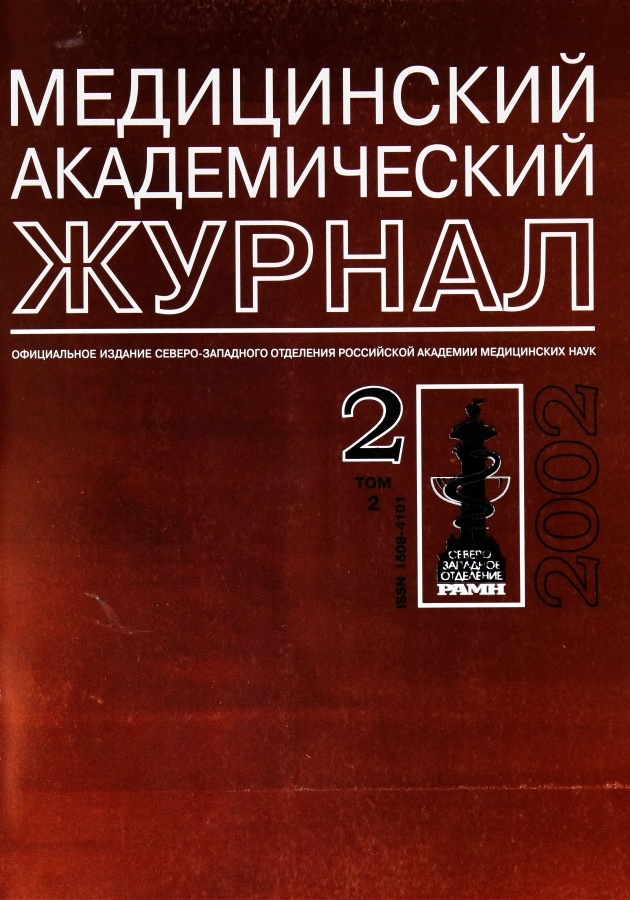Применение пептидных биорегуляторов в лечении синдрома нарушения внимания с гиперактивностью у детей и подростков
- Авторы: Кропотов Ю.Д.1, Чутко Л.С.1, Гринь-Яценко В.А.1, Яковенко Е.А.1, Рыжак Г.А.1, Хавинсон В.X.1
-
Учреждения:
- Санкт-Петербургский институт биорегуляции и геронтологии СЗО РАМН
- Выпуск: Том 2, № 2 (2002)
- Страницы: 58-63
- Раздел: Клиническая медицина
- Статья опубликована: 31.05.2002
- URL: https://journals.eco-vector.com/MAJ/article/view/694021
- ID: 694021
Цитировать
Полный текст
Аннотация
Синдром нарушения внимания с гиперактивностью (СНВГ) составляет большую социальную проблему, т.к. встречается у 5-30 % детей в общей популяции. Длительные курсы лечения традиционными ноотропными препаратами, наличие у них побочного действия, осложнений и противопоказаний требуют разработки усовершенствованных методов терапии данного заболевания.
Целью настоящего исследования явился поиск новых средств для лечения СНВГ с использованием методов биорегулирующей терапии, основанной на патогенетическом применении пептидных биорегуляторов. Сравнение результатов использования традиционных средств и пептидных биорегуляторов для лечения СНВГ показало более высокую эффективность последних. При этом оказалось, что наиболее высокая эффективность показана при сочетанном применении кортексина и церебрамина, что позволяет положительно влиять как на функцию внимания, так и на гиперактивность и импульсивность. Следует подчеркнуть, что кортексин и церебрамин не вызывают побочного действия, осложнений и не имеют противопоказаний к применению.
Об авторах
Ю. Д. Кропотов
Санкт-Петербургский институт биорегуляции и геронтологии СЗО РАМН
Автор, ответственный за переписку.
Email: medaj@eco-vector.com
Институт мозга человека РАН
Россия, Санкт-ПетербургЛ. С. Чутко
Санкт-Петербургский институт биорегуляции и геронтологии СЗО РАМН
Email: medaj@eco-vector.com
Институт мозга человека РАН
Россия, Санкт-ПетербургВ. А. Гринь-Яценко
Санкт-Петербургский институт биорегуляции и геронтологии СЗО РАМН
Email: medaj@eco-vector.com
Институт мозга человека РАН
Россия, Санкт-ПетербургЕ. А. Яковенко
Санкт-Петербургский институт биорегуляции и геронтологии СЗО РАМН
Email: medaj@eco-vector.com
Институт мозга человека РАН
Россия, Санкт-ПетербургГ. А. Рыжак
Санкт-Петербургский институт биорегуляции и геронтологии СЗО РАМН
Email: medaj@eco-vector.com
Институт мозга человека РАН
Россия, Санкт-ПетербургВ. X. Хавинсон
Санкт-Петербургский институт биорегуляции и геронтологии СЗО РАМН
Email: medaj@eco-vector.com
Институт мозга человека РАН, член-корреспондент РАМН
Россия, Санкт-ПетербургСписок литературы
- Бадалян Л. О., Заваденко Н. Н., Успенская Т. Ю. Синдромы дефицита внимания у детей: Обзор // Обозрение психиатрии и мед. психологии им. В.М. Бехтерева. 1993. № 3. С. 74-90.
- Заваденко Н. Н., Петрухин А. С. и соавт. Лечение гиперактивности с дефицитом внимания у детей: оценка эффективности различных методов фармакотерапии и Инстенон: Опыт клинического применения. СПб., 1999. С. 91-97.
- Закуцкий Н. Г. Состояние психофизиологических функций операторов авиационного профиля ВМФ и их коррекция пептидными биорегуляторами: Автореф. дис. ... канд. мед. наук. СПб., 1999. 18 с.
- Кузник Б. И., Морозов В. Г., Хавинсон В. X. Цитомедины: 25-летний опыт экспериментальных и клинических исследований. СПб., 1998. 310 с.
- Морозов В. Г., Хавинсон В. X. Пептидные биорегуляторы: 25-летний опыт экспериментального и клинического изучения. СПб., 1996. 74 с.
- Рыжак Г. А., Малинин В. В., Платонова Т.Н. Кортексин и регуляция функций головного мозга. СПб.: ИКФ «Фолиант», 2001. 160 с.
- Тржесоглава 3. Легкая дисфункция мозга в детском возрасте, м.: Медицина, 1986.194 с.
- Уэндер П., Шейдер Р. Синдром нарушения внимания с гиперактивностью // Психиатрия / Под ред. р. Шейдера, м., 1998. с. 222-236.
- August G. J., Braswell L., Thuras P. Diagnostic stability of ADHD in a community sample of school-aged children screened for disruptive behavior // J. Abnorm. Child-Psychol. 1998. Vol. 26. № 5. p. 345-356.
- Barkley R. А. Attention deficit disorder with hyperactivity: A handbook for diagnosis and treatment. N.Y., 1990.
- Biedertnan J. Attention-deficit/hyperactivity disorder: a life-span perspective // J. Clin. Psychiatry. 1998. Vol. 59. Suppl. 7. p. 4-16.
- Dencla M. B. Revised neurological examination for subtle signs // Psychopharm. Bull. 1985. Vol. 21. p. 773-789.
- Diagnostic and statistical manual of mental disorders // Am. Psych. Assoc. 4th ed. Washington, 1994.
- Hill A., Wolpe J. J. Ischemic and haemorrhagic lesions of newborn // Reimondi A.J., Choux M., Di Rosso c. Cerebrovascular diseases in children. Stuttgart - N.Y.: Springer Verlag., 1992. p. 206-215.
- Lovell R., Reiss A. Dual diagnoses: Psychiatric disorders in developmental disabilities // Pediatr. Clin. North. Am. 1993. Vol. 40. № 3. p. 579-592.
- Pliszka S. R. The use of psychostimulants in the pediatric patient // Pediatr. Clin. North. Am. 1998. Vol. 45. № 5. F 1085-1098.
- Rostain A. L. Attention deficit disorders in children and adolescents // Pediatr. Clin. North. Am. 1991. Vol. 38. № 3. p. 607-635.
- Shervette R. E., Xenakis S. N., Richters J. Anxiety and depressive disorders in attention deficit disorder with hyperactivity: new findings // Am. J. Psychiatry. 1993. Vol. 150. № 8. p. 1203-1029.
- Swanson J. M. School-based assesments and interventions for ADD students. Irvine: K.C. Publishing, 1992. 184 p.
Дополнительные файлы






